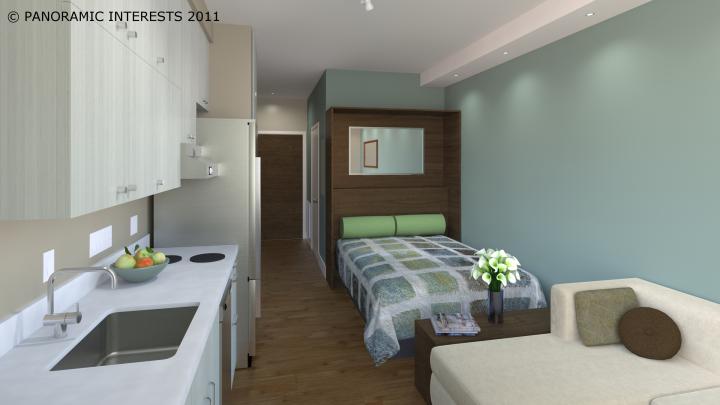The micro-unit trend (see “Living Large in Tiny Apartments,” from the May-June 2013 issue) may have originated in cramped cities like Tokyo and Paris, but it is now starting to develop in the United States.
In November, the city of San Francisco unveiled plans to build new “SmartSpace” micro-apartment complex that holds 23 units, each 285 to 310 square feet. The micro-units will have 9-foot ceilings and a large bank of windows that fills the room with natural light, and are estimated to rent for $1,300 to $1,500 a month. (The average studio apartment in San Francisco rents for $2,075 a month, according to real-estate service RealFacts, reported the San Francisco Chronicle). Each unit will have a full-sized sofa and refrigerator, a combination washer-dryer hidden in a cabinet, a convection oven, and a hidden microwave. The back of the building will feature a large patio framed by 10-foot bamboo plants.
“To confront San Francisco's rising housing affordability crisis, we must be creative and flexible,” Board of Supervisors member Scott Weiner told Wired last fall. “Allowing the construction of these units is one tool to alleviate the pressure that is making vacancies scarce and driving rental prices out of the reach of many who wish to live here.”
Boston mayor Thomas Menino, saying that the city must accelerate its housing production to meet the needs of young workers, middle-class families, and seniors, announced a plan in March to add 30,000 housing units by 2020. According to The Boston Globe, he has proposed altering city regulations to allow for the construction of hundreds of micro-units, some as small as 375 square feet and most around the 400-square-foot mark. (A graphic accompanying a Boston Globe story shows that 375 square feet is roughly one-third the size of Red Sox owner John Henry's pool.) In the Fort Point neighborhood, apartments at Factory 63 will range from 373 square feet to around 1,000, and will cost tenants in the smallest units about $1,700 per month.
In March, a panel on “Micro-Housing: Rethinking Urban Living,” sponsored by the Suffolk University Sawyer Business School and the Greater Boston Real Estate Board (GBRE), gathered architects and city planners to discuss the motivation behind micro-units in Boston. According to BRA, the City of Boston will work with Harvard’s Rappaport Institute to study the impacts of the first batch of the smaller-size units going up in the Innovation District.
“We have plenty of people proposing to build these units because they see it as a lucrative form of development,” Kairos Shen, Boston’s chief planner, told the Globe. “We don’t want to take away the incentives for them to build small, but we also want to make sure that we have real standards that guarantee a quality of life.”









